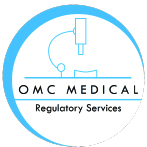The booming technological aspects have constantly challenged regulations established worldwide in the modern century because the regulations either inadequately govern novel technologies, or there always exists a scenario where the devices cannot be categorized within a given regulation.
Smart wearables are one of those aspects falling into such debate in recent times. Days are no longer from the fact that these smart wearables may draw strict regulations to be in place.
How are these general wellness devices regulated? What are these devices classified as?
Unlike medical devices, these devices are intended to be used for wellness reasons such as to improve the lifestyle by monitoring the user’s diet and exercise, enhancing physical activity etc., and they are ideally not intended to get involved in any diagnosis or therapy.
Intended Use
Any device is subject to a regulation based on its “intended use” declared by the manufacturer. Hence the manufacturer needs to pay utmost attention in declaring what their device supposed is to be used for real-life scenarios.
Smart wearables are often confused with medical devices, or sometimes they are by mistake considered medical devices if a vague intended use statement is written for the device.
Generally, smart wearables are low-powered electronic equipment intended to be worn by the user, such as wrist-worn, neckband, body-worn, adhesive to the skin surface to collect some data and transfer the information to a mobile device application.
Sensors and electronic components present in your smart wearables monitor your activities which could be determining the body’s orientation, climbing stairs, speed of walking or running, heartbeat, oxygen levels, respiratory rate, sleep patterns, etc.
Now the question here is, should one consider this a medical device when the device monitors HR, SpO2, and respiratory rates, which a physician usually monitors to determine the state of health and use these data to diagnose any physiological condition.
The answer is not straightforward, but there are smart wearables in the market that obtain FDA clearance that claims to perform certain medical purposes as the intended purpose. Such devices fall under the medical device category.
Hence, if the manufacturer claims that the device has a “medical purpose” in its intended use, the device falls under a medical device. Claims are critical in these cases.
How is my smart wearables regulated?
In Europe, there is no separate regulation released to date for smart wearables; however, depending on the nature of your device, it is mandatory to adhere to the applicable EU directive or EU Regulation. CE marking is mandatory for all categories of equipment entering the EU market.
It is essential to identify the applicable regulations for the device based on the nature and functionality of the equipment. For any electronic radio equipment, the following EU directives apply
· Radio Equipment Directive 2014/53/EU
· EMC Directive 2014/30/EU
· Low Voltage Directive 2014/35/EU
· RoHS and REACH Directive 2011/65/EU
· WEEE Directive 2002/92/EC
The below tables give a quick brief of key requirements applicable across the directives and this list is non-exhaustive:
| Sections | Radio Equipment Directive | EMC Directive | Low Voltage Directive | RoHS and REACH |
| Essential Requirements | Article 3 | Article 6 Annex I | Safety Objectives -Annex I | Article 4, Annex II Prevention |
| Technical Documentation | Article 21 Annex V | Annex II or III | Annex III | Article 6 Review of Restricted Substances |
| Conformity Assessment | Article 17, Annex II or III or IV | Article 14, Annex II or III | Annex III | Not applicable |
| Obligations for Economic Operators* | Applicable | Applicable | Applicable | Applicable |
| EU DoC | Article 18 Annex VI | Article 15 Annex IV | Article 15, Annex IV & Module A of Annex III | Article 13, Annex VI |
| Simplified DoC | Article 18 Annex VII | Not applicable | Not applicable | Not applicable |
| Field Corrective measures | Applicable | Applicable | Applicable | Applicable |
*-Economic Operators consists of Manufactures, Authorised Representatives, Distributors and Importers
The above listed are very few directives applicable for a low-powered electronic radio equipment category of the smart wearable device. It is the manufacturer’s responsibility to identify relevant regulations suitable for the device and adopt the same to meet product compliance.
The directives and standards differ based on the type of devices, such as IT and telecommunication, digital, and audio/video radio equipment.
How to use Harmonized Standards to demonstrate compliance?
Harmonized standards are voluntary standards adopted by the EU commission and deemed acceptable to demonstrate product compliance. It is presumed that by adopting harmonized standards published by the EU commission for those directives, the manufacturer can claim product compliance to the respective directive.
The standards adopted for design and testing should comprise safety and functional performance relevant to the devices. It also must meet the essential requirements of the directives/regulations.
Accredited Laboratory Testing
Testing is an integral part of demonstrating product compliance. It is always advisable to approach an accredited third-party laboratory to perform the applicable tests for your product. Manufacturers’ internal test reports are rarely considered for compliance or sometimes a risky element to showcase such reports.
Significance of Technical Documentation
As stated above, RED, EMC and LVD directives mandate the manufacturer to maintain technical documentation of the product with a retention period of 10 years from placing the device on the market.
Instructions for Use (IFU) and Labelling
Manufacturers are obliged to supply adequate information on the device’s safe usage and the device. The accompanied instruction and safety information must be in a language that can be easily understood by the user and be in the official languages of the member states. The safety information of device interference characteristics must be disclosed for radio equipment that intentionally emits radio waves.
Declaration of Conformity
The manufacturer must provide the DoC with each device sold in the market, and it needs to be in the official language of the member states. In cases where more than one directive or regulation is applied to the device, the contents of the DoC must include all the elements listed in each of those directives. In certain directives, a simplified DoC is also required to be mentioned in the IFU, where it states the location of the updated DoC on the manufacturer’s website.
Conclusion
Regulations in recent years are becoming increasingly stringent towards safety. As these devices bring in more advancements and are closely engaged with the human lifestyle to promote health and wellness, there must be careful consideration in bordering these products from being falling into the medical devices category. Eventually, be it a medical device or any equipment, it is the ultimate responsibility of the manufacturer to produce safe products.
FAQs
Does the EU maintain a list of harmonized standards?
The EU Commission maintains a list of harmonized standards published on their official website, which is updated on a timely basis.
https://ec.europa.eu/growth/single-market/european-standards/harmonised-standards_en
How does the EU regulate Data protection and privacy of the data?
General Data Protection Regulation applies to devices that collect and process the users’ personal data. European Union has sought to ensure the protection of this right through legislation. The vital regulatory principles of this GDPR are data protection principles, accountability, Data security, Data protection by design, consent, and people’s privacy rights.
Does US FDA have any regulation on smart wearable technologies?
FDA does not regulate general wellness devices, but it has released general guidance on the “general wellness: policy for low-risk devices” to provide clarity to industry and FDA staff on the Center for Devices and Radiological Health’s (CDRH’s) compliance policy for low-risk products that promote a healthy lifestyle.
Disclaimer: Regulations/legislations are subjected to changes from time to time and the author claims no responsibility for the accuracy of information.









